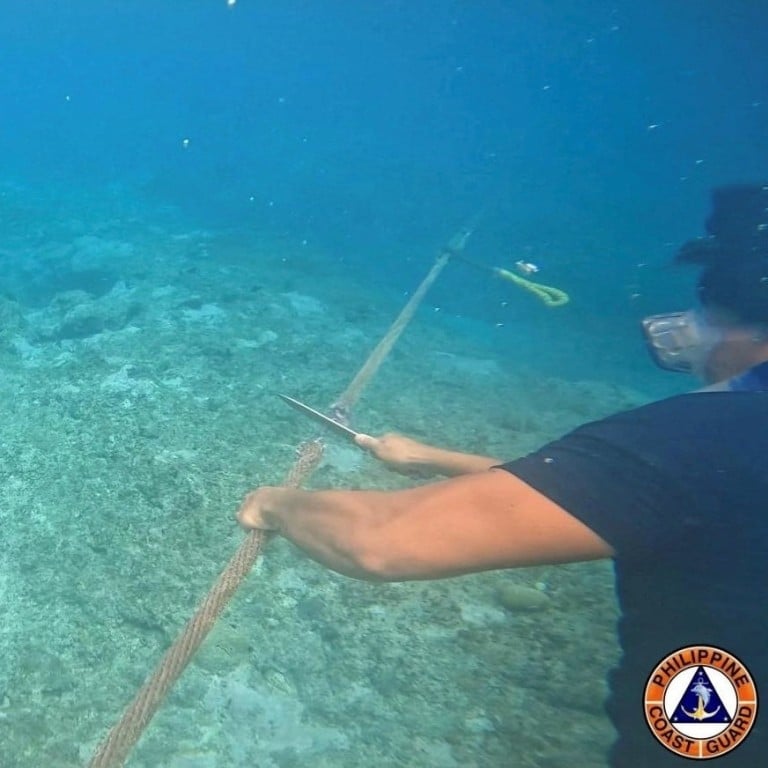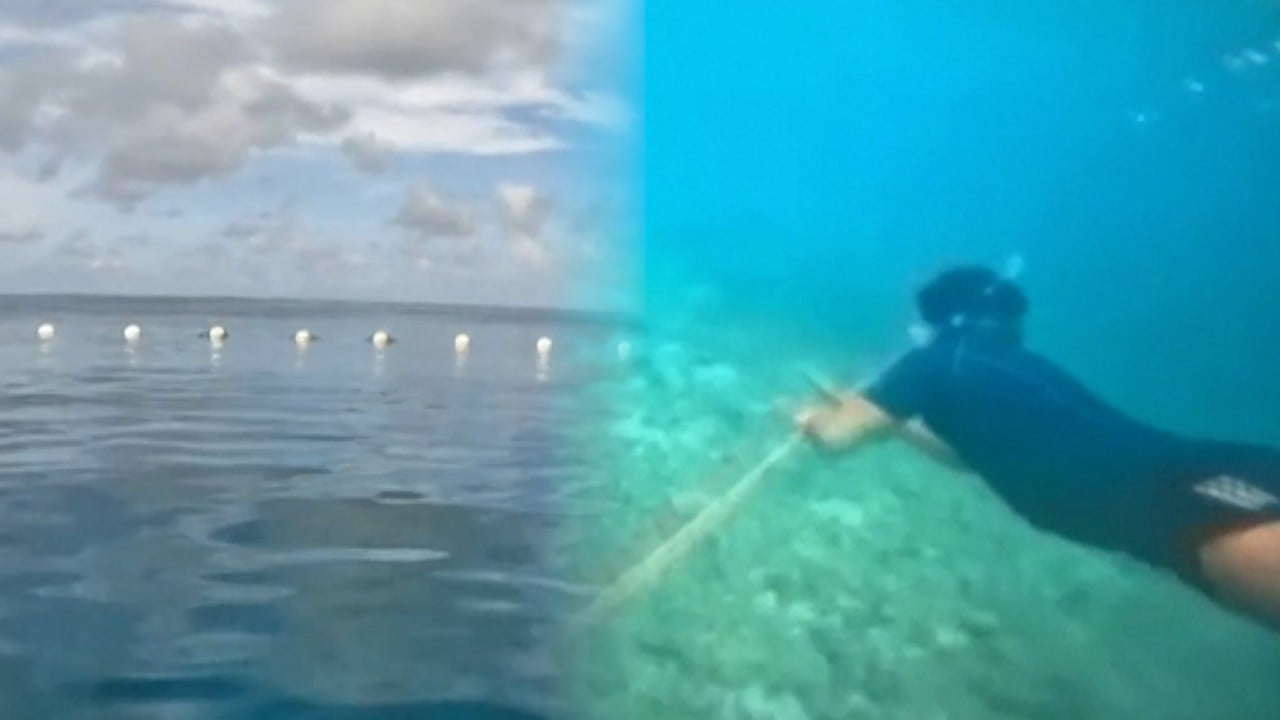
South China Sea: Beijing hits back at Manila over Scarborough Shoal barrier ‘farce’
- Chinese foreign ministry insists the shoal is Chinese territory and dismisses the removal of its buoys
- Beijing backed down last month over the Second Thomas Shoal but analyst says it won’t do so this time
A Chinese observer said Beijing was unlikely to give ground to Manila in the latest maritime dispute between the two neighbours.
China’s foreign ministry said on Monday the barrier was put in place in accordance with the law to stop Philippine fishermen from entering the shoal’s lagoon.
Later on the same day, the Philippine Coast Guard announced it had removed the buoys on the orders of President Ferdinand Marcos Jnr.
Ministry spokesman Wang Wenbin dismissed the move on Wednesday and repeated that the Scarborough Shoal – known as Huangyan Island in China – was Chinese territory and Beijing would always defend its sovereignty and maritime interests over the area.
“This so-called action by the Philippine side is purely a farce for its own amazement,” Wang said.
Observers said it was unlikely that China would allow Philippine vessels to enter the disputed area.
“If Philippine vessels were allowed in the lagoon, that would mean that China’s control over Huangyan Island was in danger,” said Hu Bo, director of South China Sea Strategic Situation Probing Initiative (SCSPI), a Beijing-based think tank.
“That’s the bottom line.”
Calling on the country’s fishermen to keep operating in the waters, the Philippine Coast Guard said on Wednesday it was exploring multi-law enforcement efforts so it could enter the fish-rich shoal.
Beijing would not back down over the Scarborough Shoal, Hu said.
After almost two weeks of confrontation over Manila’s mission to resupply troops on the Second Thomas Shoal, Beijing dialled back its response in an apparent effort to ease tension.
“The resupply mission was something they really needed, but what’s happening now is that the Philippine vessels just tried to enter the [Scarborough Shoal] lagoon,” Hu said. “It appears that [the Philippine side] wants to enter [the lagoon] so they can make a show in staking its sovereignty claim, and that’s an opportunistic move.”
Last month’s confrontation was not the first in the area this year – tensions flared in February when the Philippines accused China of using a “military grade” laser light to scuttle a resupply mission to the Second Thomas Shoal.
On Wednesday, the Philippine Navy announced that it would host a 12-day bilateral exercise with its US counterpart to strengthen defence cooperation.
Dai Fan, associate professor at Jinan University’s Institute of Southeast Asian Studies, said the Philippines appeared to have hardened its position on security policy, especially on the South China Sea.
“The Philippines’ tough stance is unprecedented,” Dai said.
“I believe that the US has played a very crucial role in pushing from behind.”
But Hu, with the SCSPI, said the risk of a wider conflict over the Scarborough Shoal was low.
“I don’t think the Philippines is ready for a stand-off with China now, like it was in 2012.”
Beijing and Manila were locked in bitter confrontation more than a decade ago after the Philippine Navy tried to apprehend Chinese fishing vessels from Hainan Island that it accused of illegally collecting coral and giant clams in the Scarborough Shoal lagoon.
Beijing insisted at that time that the Chinese fishermen were taking shelter in the lagoon from bad weather.
The maritime stand-off escalated into economic boycotts before the Philippine government announced after two months that it had reached an agreement with China for vessels from both countries from the shoal, though Manila later said Beijing did not withdraw its maritime law enforcement vessels.




